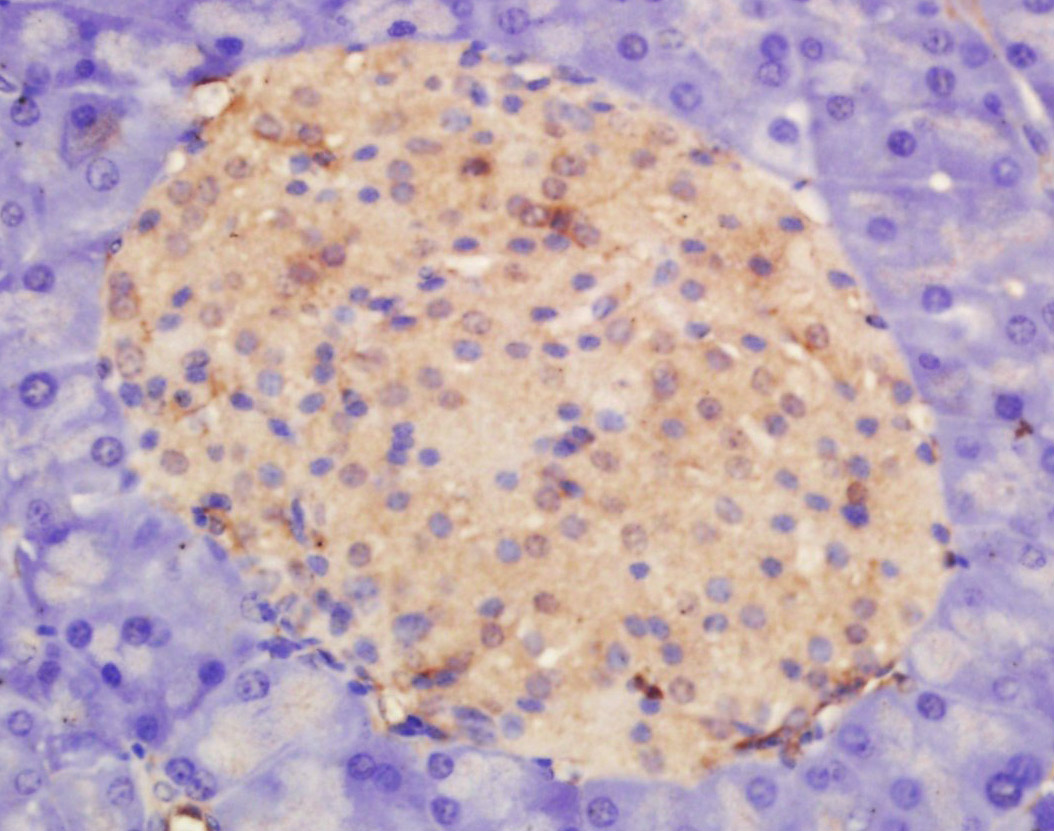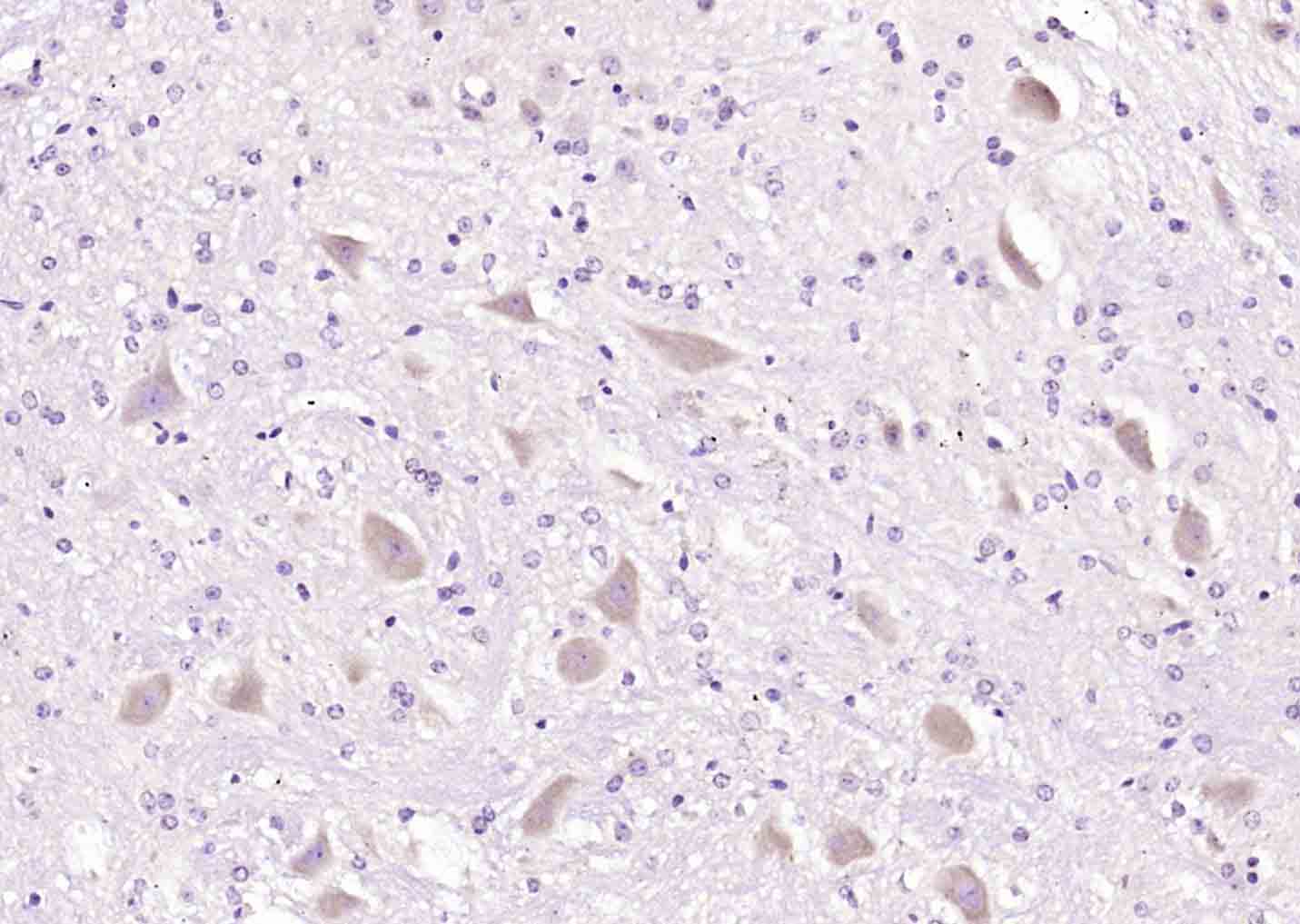
Rabbit Anti-APOD antibody
Apolipoprotein D; APOD; APO D; APOD protein; APOD_HUMAN; Apolipoprotein D; Apo-D; ApoD.
View History [Clear]
Details
Product Name APOD Chinese Name 载LipoproteinD抗体 Alias Apolipoprotein D; APOD; APO D; APOD protein; APOD_HUMAN; Apolipoprotein D; Apo-D; ApoD. literatures Immunogen Species Rabbit Clonality Polyclonal React Species Human, Mouse, Rat, (predicted: Dog, Pig, Horse, Rabbit, Sheep, ) Applications ELISA=1:5000-10000 IHC-P=1:100-500 IHC-F=1:100-500 IF=1:100-500 (Paraffin sections need antigen repair)
not yet tested in other applications.
optimal dilutions/concentrations should be determined by the end user.Theoretical molecular weight 19kDa Cellular localization Secretory protein Form Liquid Concentration 1mg/ml immunogen KLH conjugated synthetic peptide derived from human APOD: 21-120/189 Lsotype IgG Purification affinity purified by Protein A Buffer Solution 0.01M TBS(pH7.4) with 1% BSA, 0.03% Proclin300 and 50% Glycerol. Storage Shipped at 4℃. Store at -20 °C for one year. Avoid repeated freeze/thaw cycles. Attention This product as supplied is intended for research use only, not for use in human, therapeutic or diagnostic applications. PubMed PubMed Product Detail Apolipoprotein D (APO D), a glycoprotein involved in the human plasma lipid transport system. It is a progesterone binding glycoprotein of 24,000 dalton monomer molecular size, is a constituent of high density lipoprotein in plasma. The function of apolipoprotein D in the metabolism of plasma lipoproteins is unclear but the observation that this protein forms complexes with lecithin: cholesterol acyltransferase has led to the suggestion that apolipoprotein D may be involved in cholesterol esterification and transport of substrates and products of the reaction. Apolipoprotein D is expressed in a range of normal tissues including axillary apocrine glands, adrenal cortex and corpus luteum. Peripheral nerves, pituitary, testis, cerebellum and renal tubes are also positive. APO D was first isolated in large quantity as GCDFP 24, the major protein component of most human breast cyst fluids. In recent studies, Apo D immunoreactivity has been shown to be an early indicator of prostate cancer and advanced primary prostate tumors.
Function:
APOD occurs in the macromolecular complex with lecithin-cholesterol acyltransferase. It is probably involved in the transport and binding of bilin. Appears to be able to transport a variety of ligands in a number of different contexts.
Subunit:
Homodimer. In plasma, also exists as a disulfide-linked heterodimer with APOA2.
Subcellular Location:
Secreted.
Tissue Specificity:
Expressed in liver, intestine, pancreas, kidney, placenta, adrenal, spleen, fetal brain tissue and tears.
Post-translational modifications:
N-glycosylatd. N-glycan heterogeneity at Asn-65: Hex5HexNAc4 (major) and Hex6HexNAc5 (minor); at Asn-98: Hex5HexNAc4 (minor), dHex1Hex5HexNAc4 (major), dHex1Hex6HexNAc5 (minor) and dHex1Hex7HexNAc6 (minor).
Similarity:
Belongs to the calycin superfamily. Lipocalin family.
SWISS:
P05090
Gene ID:
347
Database links:Entrez Gene: 347 Human
Omim: 107740 Human
SwissProt: P05090 Human
Unigene: 522555 Human
Product Picture
Antigen retrieval: citrate buffer ( 0.01M, pH 6.0 ), Boiling bathing for 15min; Block endogenous peroxidase by 3% Hydrogen peroxide for 30min; Blocking buffer (normal goat serum,C-0005) at 37℃ for 20 min;
Incubation: Anti-APOD Polyclonal Antibody, Unconjugated(SL10130R) 1:200, overnight at 4°C, followed by conjugation to the secondary antibody(SP-0023) and DAB(C-0010) staining
Paraformaldehyde-fixed, paraffin embedded (mouse cerebellum); Antigen retrieval by boiling in sodium citrate buffer (pH6.0) for 15min; Block endogenous peroxidase by 3% hydrogen peroxide for 20 minutes; Blocking buffer (normal goat serum) at 37°C for 30min; Antibody incubation with (APOD) Polyclonal Antibody, Unconjugated (SL10130R) at 1:200 overnight at 4°C, followed by operating according to SP Kit(Rabbit) (sp-0023) instructionsand DAB staining.
Bought notes(bought amounts latest0)
No one bought this product
User Comment(Total0User Comment Num)
- No comment




 +86 571 56623320
+86 571 56623320
 +86 18668110335
+86 18668110335

